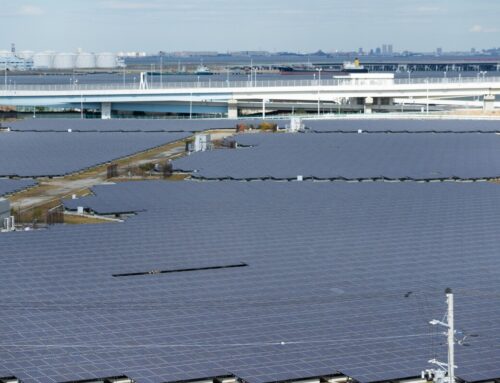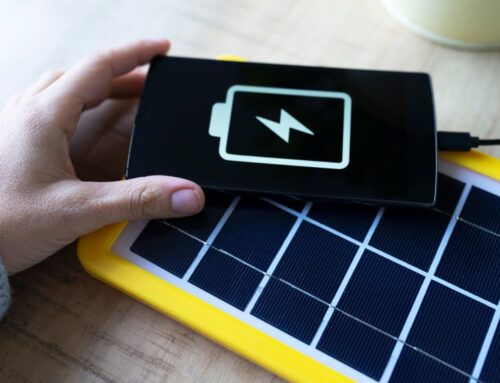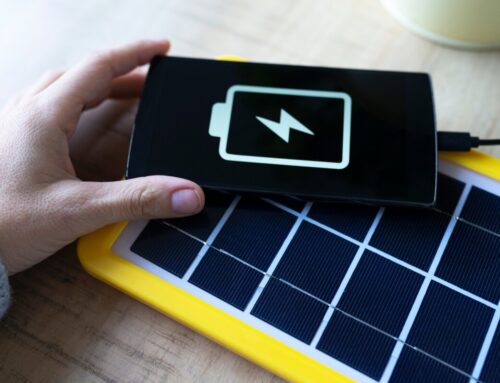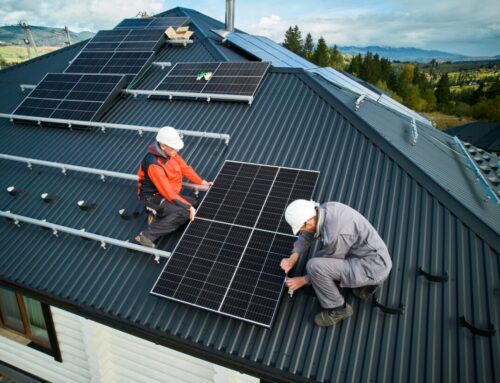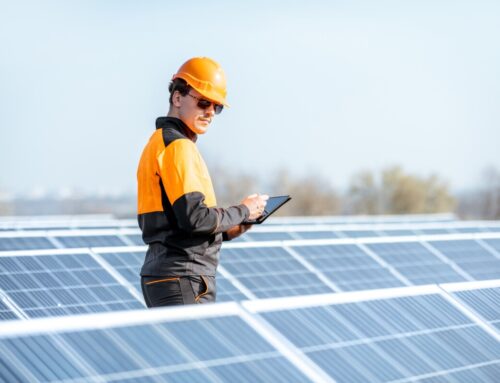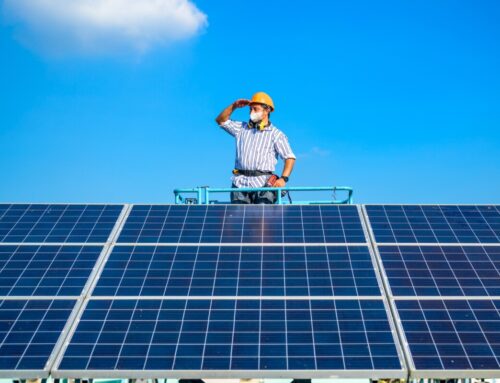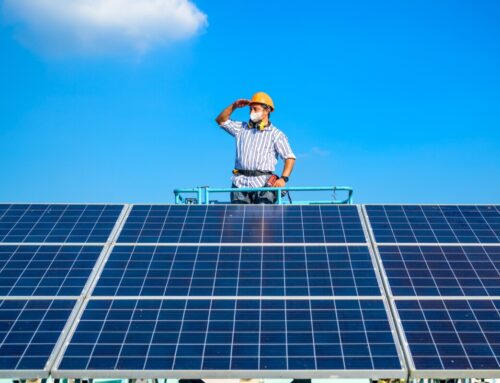Solar Power Plant Installation Process Guide
Imagine harnessing the sun’s power to fuel your home or business—sounds like a dream, right? The solar power plant installation process makes this dream a reality, transforming sunlight into usable energy. However, many find the process daunting due to its technical nature. Fear not! By breaking it down into manageable steps, you’ll see it’s not as complex as it seems. Let’s explore the step-by-step solar power plant installation process to illuminate your path to sustainable energy.
Step 1: Site Assessment and Design
- Site Evaluation: A thorough assessment of your location’s solar potential, including roof orientation and shading analysis.
- System Design: Tailoring a solar system to meet your energy needs and site specifications.
Step 2: Permitting and Approvals
- Documentation: Navigating local regulations and securing necessary permits.
- Approval Process: Collaborating with local authorities to ensure compliance with zoning laws.
Step 3: Installation and Connection
- Mounting and Wiring: Installing solar panels and connecting them to your electrical system.
- Testing and Activation: Ensuring everything functions correctly before flipping the switch to solar power.
Site Assessment and Feasibility: Is Your Location Ideal for Solar Power?
Are you considering diving into the solar power plant installation process but unsure if your location is suitable? This is a common concern for many potential solar adopters. The good news is that a thorough site assessment can provide the clarity you need. By evaluating your location’s solar potential, you can ensure that your investment in solar energy will be both effective and efficient.
A comprehensive site assessment involves several key steps to determine the feasibility of solar power at your location.
- Sunlight Exposure: The amount of sunlight your site receives is crucial. Areas with unobstructed sunlight for most of the day are ideal.
- Roof or Land Space: Adequate space is necessary to install the solar panels. This includes considering the orientation and tilt of your roof or the available land area.
- Local Regulations: Understanding zoning laws and obtaining necessary permits is essential to avoid legal hurdles later on.
Once these factors are evaluated, you can confidently move forward with the solar power plant installation process, knowing that your location is primed for optimal solar energy generation. This step not only ensures efficiency but also maximizes your return on investment.
Read Also: How Do Solar Panels Generate Power for Your Home?
Designing Your Solar Power System: Customizing for Efficiency and Output
Embarking on the solar power plant installation process can seem daunting, but with the right design, it transforms into an exciting journey towards energy independence. The problem many face is ensuring their system is both efficient and tailored to their specific needs. By customizing your solar power system, you promise not only to maximize energy output but also to optimize cost-effectiveness and sustainability.
Assessing Your Energy Needs
Before diving into the solar power plant installation process, it’s crucial to evaluate your current and future energy requirements.
Consider factors such as your average energy consumption, peak usage times, and potential growth in energy needs. This assessment helps in determining the size and type of solar panels and inverters required, ensuring your system is neither over nor underpowered.
Site Evaluation and System
Design Once your energy needs are clear, the next step is a thorough site evaluation. This involves analyzing roof space, sun exposure, and potential shading obstacles.
With this information, a custom design is crafted, selecting the optimal panel placement and tilt to capture maximum sunlight. This tailored approach ensures your solar power system is efficient, reliable, and perfectly suited to your location.

Curious about solar? Let us help you discover how solar energy can revolutionize your home and save you money. Request Your Free Solar Estimate at SOLAR ENERGY
Navigating Permits and Regulations: What Approvals Are Needed?
Embarking on the solar power plant installation process can feel like navigating a maze of paperwork and regulations. The problem many face is understanding the myriad of permits and approvals required to get their solar projects off the ground. But fear not, as we promise to guide you through this intricate process with clarity and ease.
Understanding Local and Federal Requirements
Before breaking ground, it’s crucial to comprehend both local and federal regulations. Local zoning laws often dictate where and how solar panels can be installed, while federal guidelines may influence the overall design and safety standards.
Ensure you consult with local authorities to align your project with community guidelines.
Essential Permits and Approvals
- Building Permits: Required to ensure the structural integrity of the installation.
- Electrical Permits: Necessary for connecting your solar system to the grid.
- Environmental Approvals: Needed if your project impacts local ecosystems.
By systematically addressing these requirements, you can streamline the solar power plant installation process, paving the way for a successful and compliant solar project.
Procuring Quality Equipment: How to Choose the Right Solar Components
Embarking on the solar power plant installation process can be both exciting and daunting. The promise of sustainable energy is enticing, but choosing the right components is crucial to harnessing the sun’s power effectively. Selecting quality solar equipment ensures efficiency, longevity, and optimal performance of your solar power plant. But how do you navigate the myriad of options available? Let’s break it down.
Key Considerations for Solar Equipment
- Efficiency and Durability: Look for solar panels with high efficiency ratings and robust construction to withstand environmental conditions.
- Inverter Quality: Choose inverters that offer high conversion efficiency and reliability, as they are pivotal in converting solar energy into usable electricity.
- Warranty and Support: Opt for components with comprehensive warranties and strong customer support to safeguard your investment.
By focusing on these critical factors, you can confidently select the right solar components, ensuring a smooth and successful solar power plant installation process. Remember, investing in quality equipment today paves the way for a sustainable and cost-effective energy future.
Installation Day: Step-by-Step Guide to Setting Up Your Solar Power Plant
Imagine the excitement of finally seeing your solar power plant come to life. You’ve done the research, chosen the right system, and now it’s time for the solar power plant installation process. But where do you start? Don’t worry; we’re here to guide you through every step, ensuring a smooth and successful setup. By the end of this guide, you’ll have a fully operational solar power plant, ready to harness the sun’s energy.
Step 1: Site Assessment and Preparation
Before any installation begins, a thorough site assessment is crucial. This involves evaluating the roof or ground space to ensure it can support the solar panels. Technicians will check for any shading issues and determine the optimal panel placement. Once the site is prepped, the installation team will set up scaffolding and safety measures to ensure a secure working environment.
Step 2: Installing the Solar Panels and Inverter
With the site ready, it’s time to install the solar panels. The team will mount the panels securely, ensuring they are angled correctly to maximize sunlight exposure. Following this, the inverter, which converts solar energy into usable electricity, is installed. This step is vital as it connects your solar power plant to your home’s electrical system, allowing you to start generating power immediately.
Testing and Commissioning: Ensuring Optimal Performance and Safety
After the intricate steps of the solar power plant installation process, the focus shifts to testing and commissioning. This crucial phase ensures that every component functions seamlessly and safely. Imagine investing in a solar power system only to find out it’s not operating at its peak efficiency. That’s where testing and commissioning come in, promising optimal performance and safety for your solar investment.
Key Testing Procedures
- Electrical Testing: Verifies the integrity of electrical connections and ensures that all circuits are functioning correctly.
- Performance Testing: Assesses the system’s energy output to confirm it meets the expected performance standards.
Commissioning for Safety
- Safety Checks: Involves rigorous inspections to ensure all safety protocols are adhered to, minimizing risks.
- System Calibration: Fine-tunes the system settings for optimal operation under varying conditions.
By meticulously following these steps, the solar power plant installation process culminates in a reliable and efficient energy solution, ready to harness the sun’s power safely and effectively.
Maintenance and Monitoring: Keeping Your Solar Power Plant Running Smoothly
Imagine your solar power plant installation process is complete, and your system is harnessing the sun’s energy efficiently. But what happens next? The problem many face is ensuring their solar power plant continues to operate at peak performance. The promise of a well-maintained system is not only longevity but also optimal energy production. Let’s explore how regular maintenance and monitoring can keep your solar power plant running smoothly.
Routine Maintenance Tasks
To keep your solar power plant in top shape, regular maintenance is essential. This includes cleaning the solar panels to remove dust and debris that can block sunlight. Additionally, inspecting the wiring and connections ensures there are no loose or damaged parts that could affect performance. Regularly checking the inverter and battery systems is also crucial to prevent unexpected failures.
Monitoring for Optimal Performance
Monitoring your solar power plant is key to identifying issues before they become major problems.
Use monitoring systems to track energy production and detect anomalies in real-time. This proactive approach allows for quick adjustments, ensuring your solar power plant installation process continues to yield maximum benefits. With these steps, you can enjoy a seamless and efficient solar energy experience.
How SolarEnergy Can Simplify Your Solar Power Plant Installation Process
Are you ready to harness the power of the sun but overwhelmed by the solar power plant installation process? You’re not alone. Many find the journey from concept to completion daunting. At SolarEnergy, we promise to transform this complex process into a seamless experience. Our step-by-step approach ensures you understand each phase, making your transition to solar energy smooth and stress-free.
Step-by-Step Guidance
- Initial Consultation: We begin with a detailed consultation to assess your energy needs and site suitability.
- Design and Planning: Our experts craft a customized plan tailored to your specific requirements.
- Permitting and Approvals: We handle all necessary paperwork, ensuring compliance with local regulations.
- Installation: Our skilled technicians install your system efficiently, minimizing disruption.
- Testing and Commissioning: We rigorously test the system to guarantee optimal performance.
By choosing SolarEnergy, you’re opting for a partner who simplifies the solar power plant installation process, ensuring you enjoy the benefits of renewable energy without the hassle.
Don’t wait to go solar! Thousands of homeowners are saving—join them and start reaping the benefits.
Book Your Free Consultation at SOLAR ENERGY
Explore additional solar solutions at NEW SOLAR QUOTES and discover how it can benefit your home!


